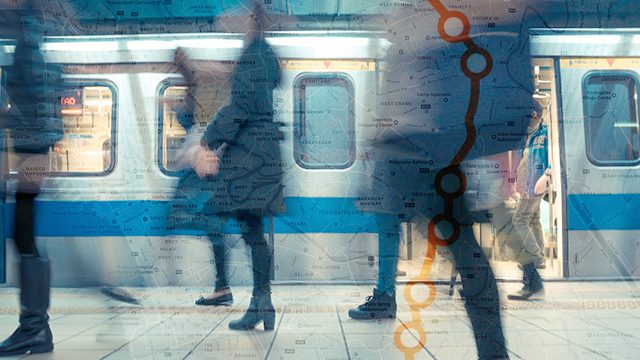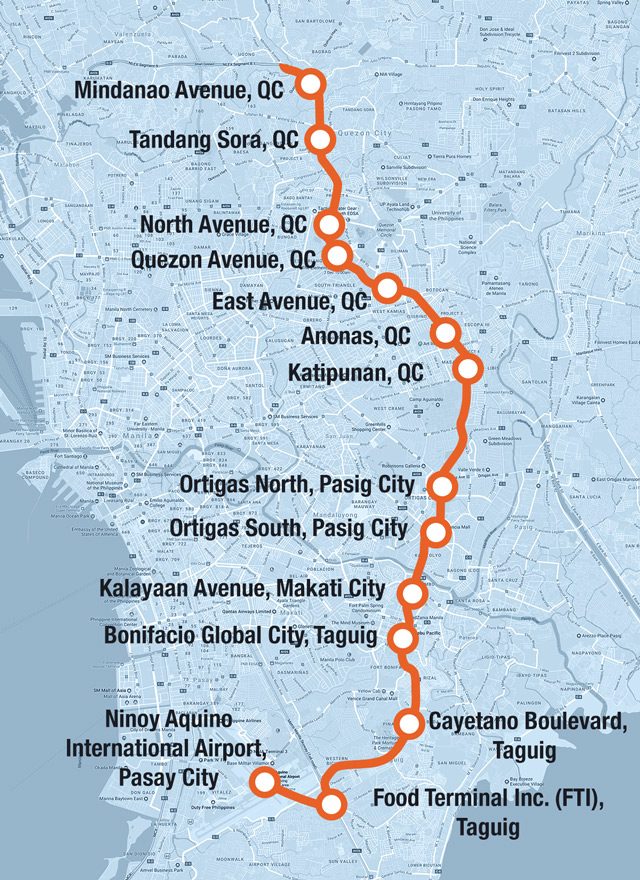SUMMARY
This is AI generated summarization, which may have errors. For context, always refer to the full article.

MANILA, Philippines – The government’s proposal to build the country’s first subway has finally landed on President Rodrigo Duterte’s desk for final approval, but with two modifications: an extension to the Ninoy Aquino International Airport (NAIA) and increased project cost of $7 billion (P358.25 billion).
The Department of Transportation (DOTr) on Wednesday, September 6, said in a statement that the National Economic and Development Authority – Investment Coordination Committee (NEDA-ICC) approved the Metro Manila Subway Project with an extension to NAIA.
From an earlier projection of $4.4 billion (P225.17 billion), the estimated project cost went up to $7 billion (P358.25 billion).
“In most of our neighboring countries in Asia, you can reach the city without ever leaving the platform. So, economic managers thought we’re going to build a subway anyway, so why not push to extend it to NAIA? It just makes perfect sense. The extension will mean greater connectivity and improved passenger comfort and convenience,” Transportation Secretary Arthur Tugade was quoted as saying.
Once the NEDA Board, headed by Duterte, approves the project, it will then be implemented by the transportation department. The project will be funded via official development assistance (ODA) from the Japan International Cooperation Agency (JICA).

Funding arrangements
The DOTr said the loan will have an interest of 0.10% per annum payable in 40 years with a grace period of 12 years.
The signing of the loan agreement is expected in November when Japanese Prime Minister Shinzo Abe meets with President Rodrigo Duterte during the ASEAN Summit.
The subway, which will start in Mindanao Avenue in Quezon City, was previously going to end in the FTI area in Parañaque City. But the DOTr said the economic managers “pushed to have a spur line extending the subway to NAIA” to make it easier for airport passengers to get to their destination in Metro Manila.
Tugade said the groundbreaking is currently scheduled in the 4th quarter of 2018, while the target completion is by 2025. The transportation chief said he is asking partners from JICA to speed up the project.
“We have consistently asked our Japanese partners to expedite the project. They are experts in tunneling technology, and I’m sure they can deliver ahead of schedule. But, of course, we can never compromise the quality and integrity of the project,” he said.
According to the DOTr, the subway system will have water-stop panels and doors, a high-level entrance for flood prevention, earthquake detection, and a train stop system – just like the subways in Tokyo. (READ: Tokyo Metro: It’s time to build a subway in PH)
This would have been the most expensive public-private partnership (PPP) deal implemented under former president Benigno Aquino III’s administration.
But it was removed from the PPP pipeline because of scheduling constraints, with former transportation officials saying that talks on the subway’s final alignment were “eating up much time.”
The Duterte administration then revisited the subway deal, saying “there is demand for the service.” (READ: 5 failed, shelved PPP projects under Aquino admin) – Rappler.com
P51.1760 = $1
Add a comment
How does this make you feel?
There are no comments yet. Add your comment to start the conversation.